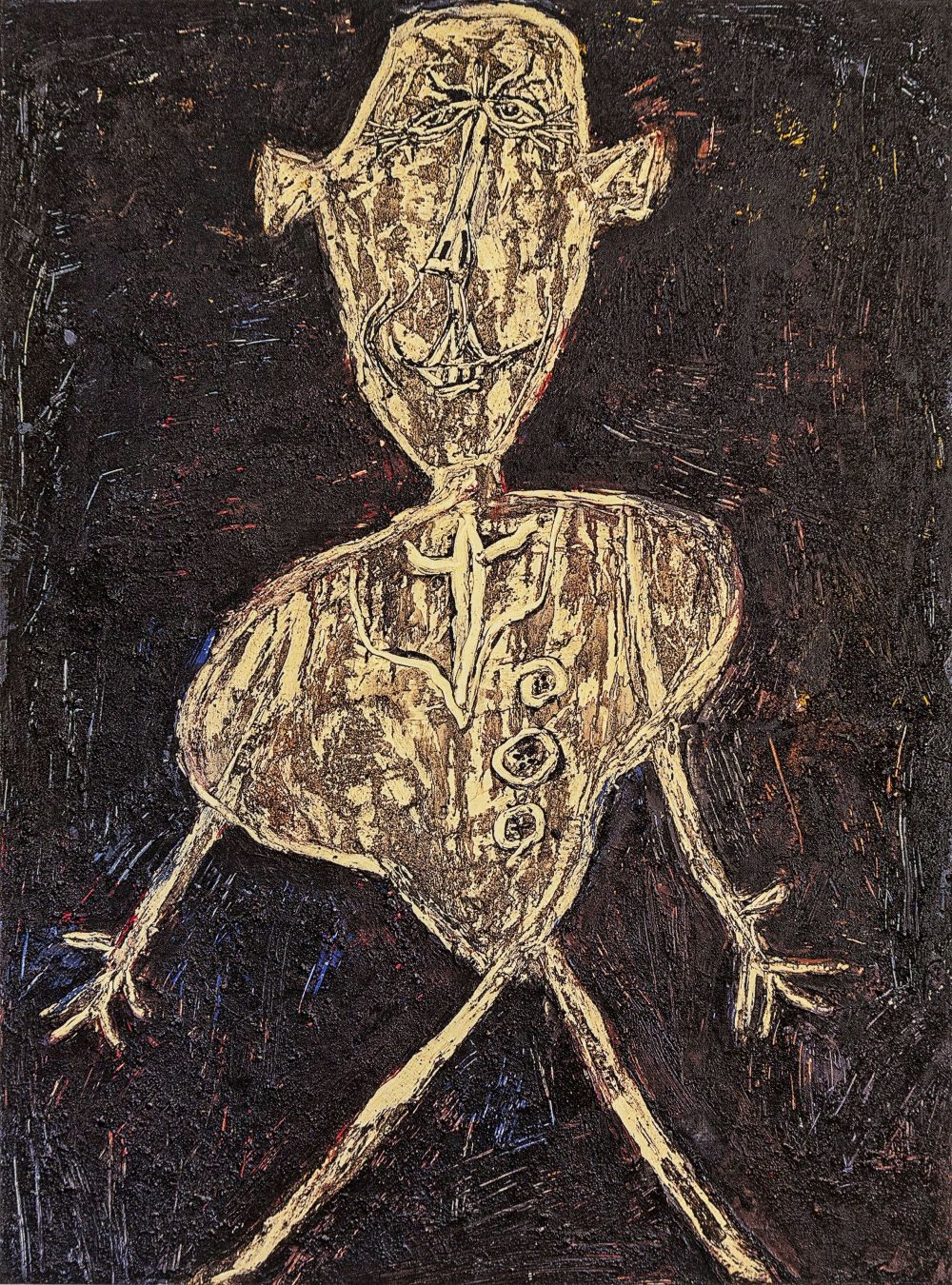 Jean Dubuffet / Henri Michaux acteur japonais, 1946. Óleo sobre lienzo 130 x 97cm Collection Financière Saint James, París / Cortesía Applicat-Prazan © Jean Dubuffet, VEGAP, Valencia, 2019
Jean Dubuffet / Henri Michaux acteur japonais, 1946. Óleo sobre lienzo 130 x 97cm Collection Financière Saint James, París / Cortesía Applicat-Prazan © Jean Dubuffet, VEGAP, Valencia, 2019JEAN DUBUFFET - A barbarian in Europe
IVAM, Institut Valencià d'Art Modern ( October 8, 2019 - February 16, 2020 )
The show, curated by Baptiste Brun, comprises a meticulous selection of about two hundred works, including paintings, drawings, sculptures and engravings, together with many documents and objects, with which we are able to offer the public an approach to the work of Jean Dubuffet (Le Havre, 1901–Paris, 1985) from a new perspective based on history, culture and anthropology. The project is developed in ten different sections that revolve around three fundamental themes: “Celebration of the Common Man”, “Ethnography in Actuality” and “Criticism of Culture”. The exhibition has been conceived and created by the MuCEM in coproduction with the IVAM and MEG. This project is supported by the Fondation Dubuffet in Paris and the Collection de l’Art Brut in Lausanne, and also by many European institutions and private collections.
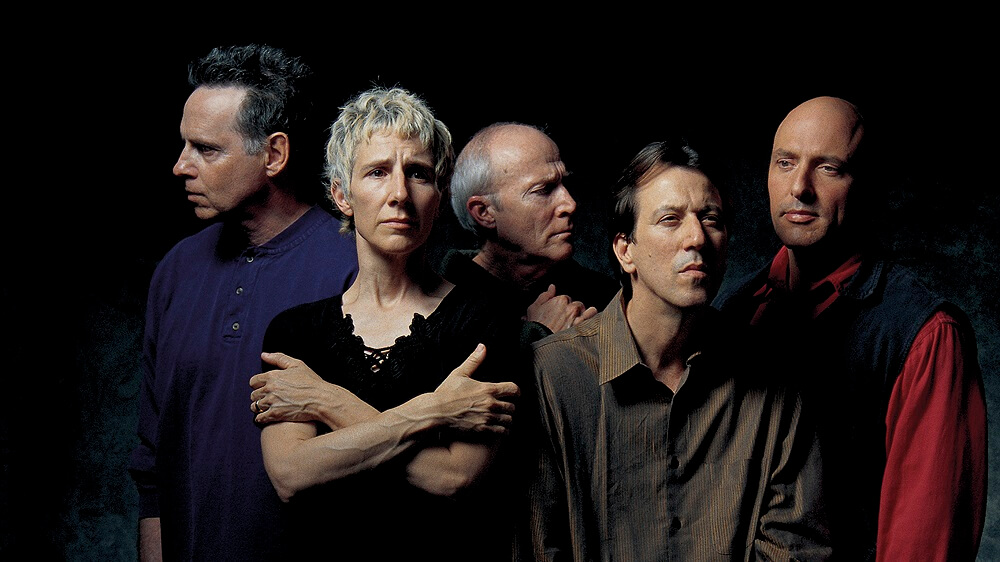 @ Bill Viola
@ Bill ViolaBILL VIOLA - Mirrors of the invisible
La Pedrera - Casa Milà - Barcelona ( October 4, 2019 - January 5, 2020 )
Bill Viola (New York, 1951) is one of the most prominent and prestigious artists on the international scene. Considered one of the pioneers of video art, he masterfully uses sophisticated audiovisual technologies to explore and express a constant concern for the nature of the human being and the transience of life.
Focused on universal issues such as birth, death, pain, redemption or the passage of time, his works open the way to the senses to convey feelings and generate moods. In his creations without words the image is felt, heard, removed and reveals deep emotions. The slowed and looped movement immerses the viewer into an inner world, deepening the fundamental experiences of existence to "awaken the soul." His works, of extraordinary intensity and beauty, are unique and always move us.
The exhibition «Bill Viola. Mirrors of the invisible »offers a broad journey through the artist's career, which has evolved in parallel to the development of video technology over the past forty years, and encompasses from significant works of its beginnings, such as The Reflecting Pool (1977 -1979), until recent creations such as Martyrs (Earth, Air, Fire, Water), a commission made by the Saint Paul Cathedral in London, where it has been permanently exhibited since 2014.
 Francis Bacon, « Triptych » (détail), 1970 © The Estate of Francis Bacon/All rights reserved/Adagp, Paris and DACS, London 2019. Photo - DACS/Artimage 2019/Hugo Maertens.webloc
Francis Bacon, « Triptych » (détail), 1970 © The Estate of Francis Bacon/All rights reserved/Adagp, Paris and DACS, London 2019. Photo - DACS/Artimage 2019/Hugo Maertens.weblocBACON: BOOKS AND PAINTING
Centre Georges Pompidou - Paris ( Sptember 11, 2019 - January 20, 2020 )
The exhibition focuses on works produced by Bacon in the last two decades of his career (from 1971 to 1992).
It consists of sixty paintings, including 12 triptychs, in addition to a series of portraits and self-portraits, from major private and public collections.
There are six rooms along the visitor route, placing literature at the heart of the exhibition. While denying any ‘narrative’ exegesis in his work, Francis Bacon, nevertheless admitted that literature represented a powerful stimulus for his imagination. rather than giving shape to a story, poetry, novels and philosophy inspired a ‘general atmosphere’; ‘images’ which emerged like the Furies in his paintings.
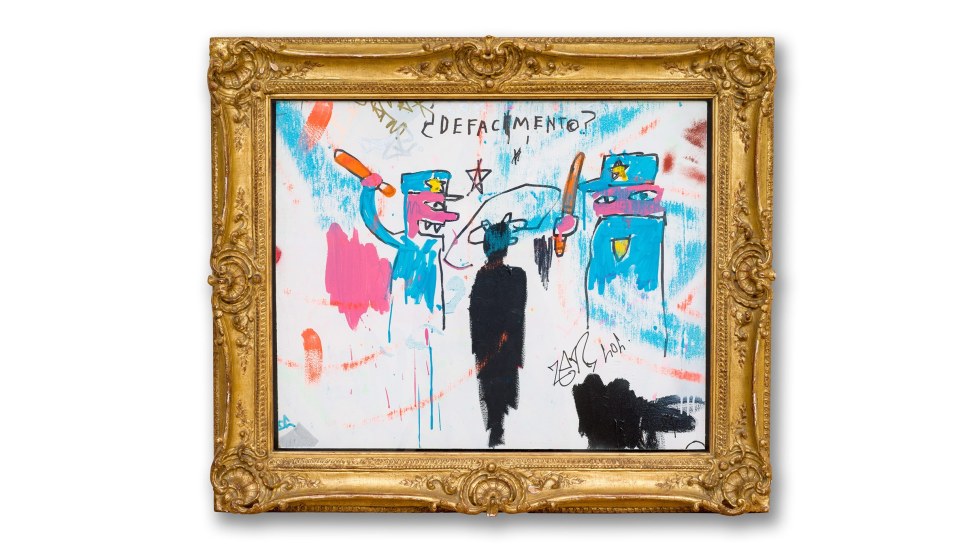 Jean-Michel Basquiat, Defacement (The Death of Michael Stewart), 1983. Acrylic and marker on wood, framed, 63.5 x 77.5 cm. Collection of Nina Clemente, New York. Photo: Allison Chipak © Estate of Jean-Michel Basquiat. Licensed by Artestar, New York
Jean-Michel Basquiat, Defacement (The Death of Michael Stewart), 1983. Acrylic and marker on wood, framed, 63.5 x 77.5 cm. Collection of Nina Clemente, New York. Photo: Allison Chipak © Estate of Jean-Michel Basquiat. Licensed by Artestar, New YorkBASQUIAT´S “Defacement”: The Untold Story
Solomon R. Guggenheim Museum New York ( June 21–November 6, 2019)
A tightly focused, thematic exhibition of work by Jean-Michel Basquiat (American, 1960–1988), supplemented with work by others of his generation, will explore a formative chapter in the artist’s career through the lens of his identity and the role of cultural activism in New York City during the early 1980s. The exhibition takes as its starting point the painting Defacement (The Death of Michael Stewart) (1983), which Basquiat created to commemorate the fate of the young, black artist Michael Stewart at the hands of New York City’s transit police after allegedly tagging a wall in an East Village subway station. Originally painted on the wall of Keith Haring’s studio, Defacement was not meant to be seen publicly or enter the art market.
With approximately twenty paintings and works on paper created in the years surrounding Stewart’s death, this presentation will examine Basquiat’s exploration of black identity, his protest against police brutality, and his attempts to craft a singular, aesthetic language of empowerment. Additional paintings by Basquiat will further illustrate his engagement with police misconduct, while others will demonstrate his adaptation of crowns as symbols for the canonization of historical black figures. Also featured will be ephemera related to Stewart’s death, including newspaper clippings and protest posters, along with samples of artwork from Stewart’s estate. Paintings and prints made by other artists in response to Stewart’s death and the subsequent trial will also be included: Haring’s Michael Stewart—U.S.A. for Africa (1985); Andy Warhol’s screenprinted “headline” paintings from 1983 incorporating a New York Daily News article on Stewart’s death; and David Hammons’ series of stenciled prints entitled The Man Nobody Killed from 1986 are testaments to the solidarity experienced among artists at the time. An illustrated publication will showcase entirely new scholarship on Basquiat and the burgeoning East Village art scene during the early 1980s, an era marked by the rise of the art market, the AIDS crisis and the political activism it engendered, and the ongoing racial tensions in the city.
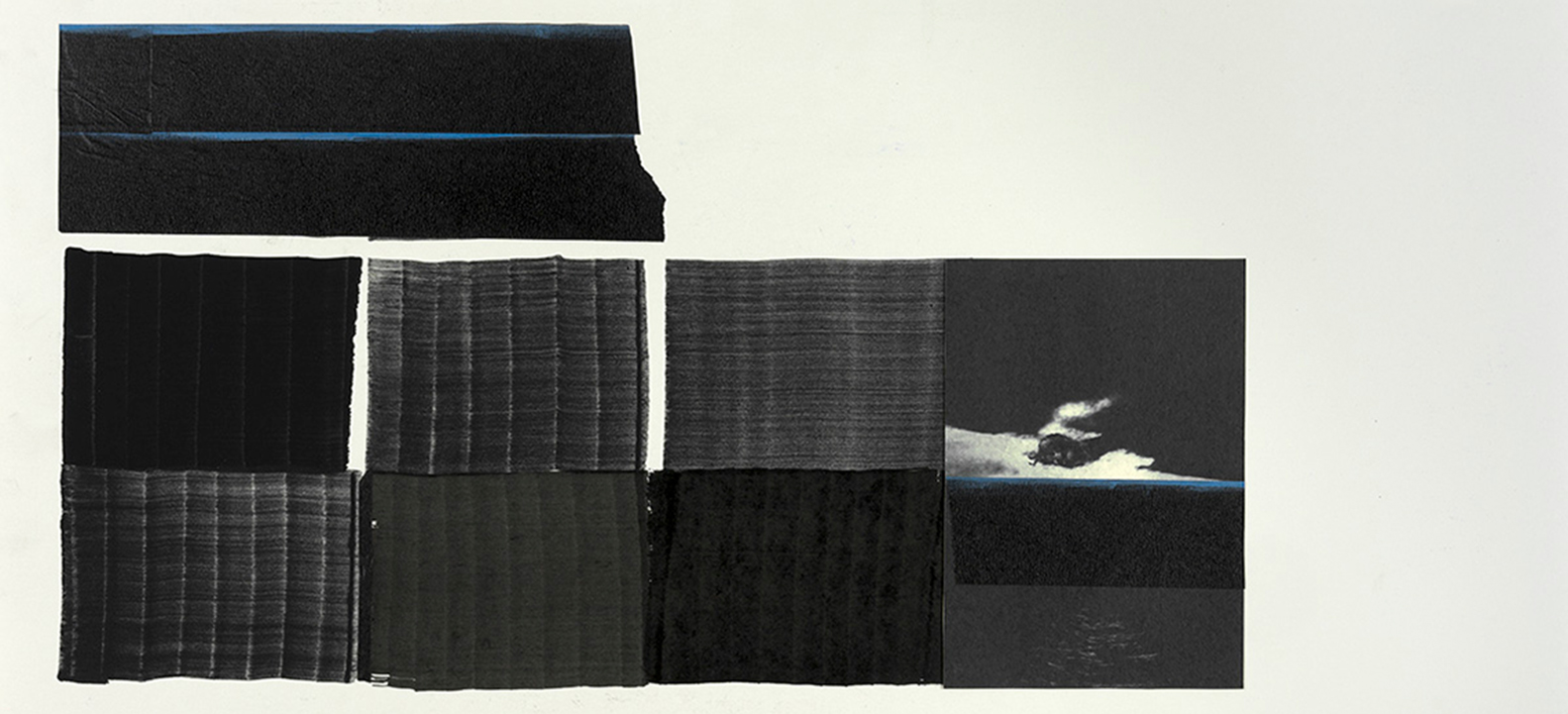 Juan Uslé I Carbón y Maculares I 2011 - 2018 I Cardboard and mixed media I 56 x 71.2 cm. I Photo: Sergio Belinchón
Juan Uslé I Carbón y Maculares I 2011 - 2018 I Cardboard and mixed media I 56 x 71.2 cm. I Photo: Sergio BelinchónJUAN USLÉ - Notes on SQR
Museu d'Art Contemporani d'Eivissa ( June 7 - October 31, 2019)
La Sala de Armas of the Contemporary Art Museum of Ibiza (MACE) hosts the exhibition 'Notes on SQR', a compilation of 34 works by Juan Uslé (Santander, 1954) between 2011 and 2018, which is the first time to see in Ibiza pieces by one of the Spanish artists with the most international projection in contemporary art. Uslé lives and works between Spain and New York since 1987 and is considered a generational reference with a work spanning more than four decades. His paintings are included in what is called lyrical abstraction, after minimalism. It surpasses the limits of illusionism and the metaphorical one to make a synthetic and substantial representation of reality. Through memory and photography, which he uses as a record of his experiences, the artist proposes an evocation of his life making a deconstruction of any figurative reference and giving all importance to the pictorial and chromatic aspect.
The first works with the generic title of SQR ('Soñé que revelabas') emerged in 2003. The 34 drawings that are exposed to the MACE are considered autonomous works but also tests for later large format paintings. Uslé has organized these works in groups called 'Carbón y Maculaste', 'Sintaxis', 'Trama', 'Tapas / Freus', 'Islas', 'Salinas' and 'Luz' and are made in acrylic paint and, sometimes, adhesive tape and papers on cardboard. Among the last exhibitions of the creator, 'Darki Light' in the Kuntsmuseum of Bonn or '‘Luz Oscura' in the Galician Center of Contemporary Art of Santiago de Compostela, both in 2014. He participated in 1992 in Documenta 9 of Kassel and in 2005 at the Venice Biennial, in addition to receiving the 2002 National Prize for the Plastic Arts, which consolidates him as one of the most important artists today.
 Ernesto Neto, Sopro (2019). Installation view. Photo by Isabella Matheus. Image courtesy of Pinacoteca de São Paulo
Ernesto Neto, Sopro (2019). Installation view. Photo by Isabella Matheus. Image courtesy of Pinacoteca de São PauloERNESTO NETO - Sopro
The Pinacoteca of São Paulo ( March 30 - July 15 2019 )
The Pinacoteca of São Paulo, a museum of the São Paulo State Secretariat of Culture and Creative Economy, and Banco Bradesco presents the exhibition Ernesto Neto: Sopro [Blow], which will occupy the Octagon, seven rooms on the first floor and other spaces of the Pina Luz building. Curated by Jochen Volz and Valéria Piccoli, respectively director and chief-curator of the museum, the retrospective brings together 60 works by one of the most prominent names in contemporary sculpture. Since the beginning of his career, in the 1980s, the artist has been producing a body of work that sets in motion a dialogue between the exhibition space and the various dimensions of the spectator.
Bringing into play his unique comprehension of Neo-Concrete heritage, Ernesto Neto (Rio de Janeiro, 1964) unfolds his initial sculptures – elaborated from materials such as polyamide stockings, polystyrene spheres, spices and herbs – into large, immersive installations that proposes to the spectator a space for conviviality, for taking a breath and for fostering consciousness and awareness. His sculptural practice is engendered by the tension embodied in textile materials and in handicraft techniques like crochet. These great ludic structures accommodate rituals and actions that reveal the artist’s current concerns: the affirmation of the body as an element that cannot be dissociated from the mind and from spirituality.
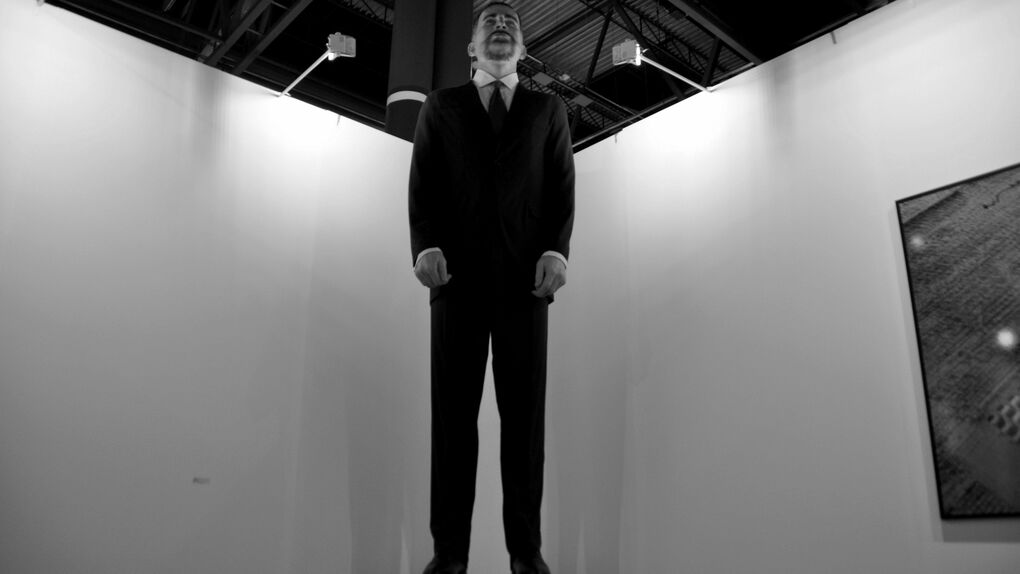 Ninot, 2019, 120 x 120 x 444 cm @ Santiago Sierra and Eugenio Merino
Ninot, 2019, 120 x 120 x 444 cm @ Santiago Sierra and Eugenio MerinoARCO madrid 2019
Ifema . Feria de Madrid ( February, 27 - March, 3 )
A total of 203 galleries from 31 countries participate, of which 166 are part of the General Program, adding to them the curated sections: 'Perú en ARCO', with a selection of 24 artists from 15 galleries; 'Diálogos', with 13 galleries and 'Opening', with 21.
From February 27 to March 3, a new edition of ARCOmadrid arrives in Madrid that turns the Spanish capital into a valued attraction for collectors, galleries, artists and art professionals from all over the world. The fair, in its 38th edition, continues in its line of adjusting its spaces and presentations to the needs of the galleries and interests of the curators. At the disposal of Peruvian artists participating in the program `Peru in ARCO`, the galleries' commitment to the presentation of one or two artists is added, as well as the growing contribution of special projects distributed by the fair, which highlight the complicity and close collaboration of the galleries with the artists.
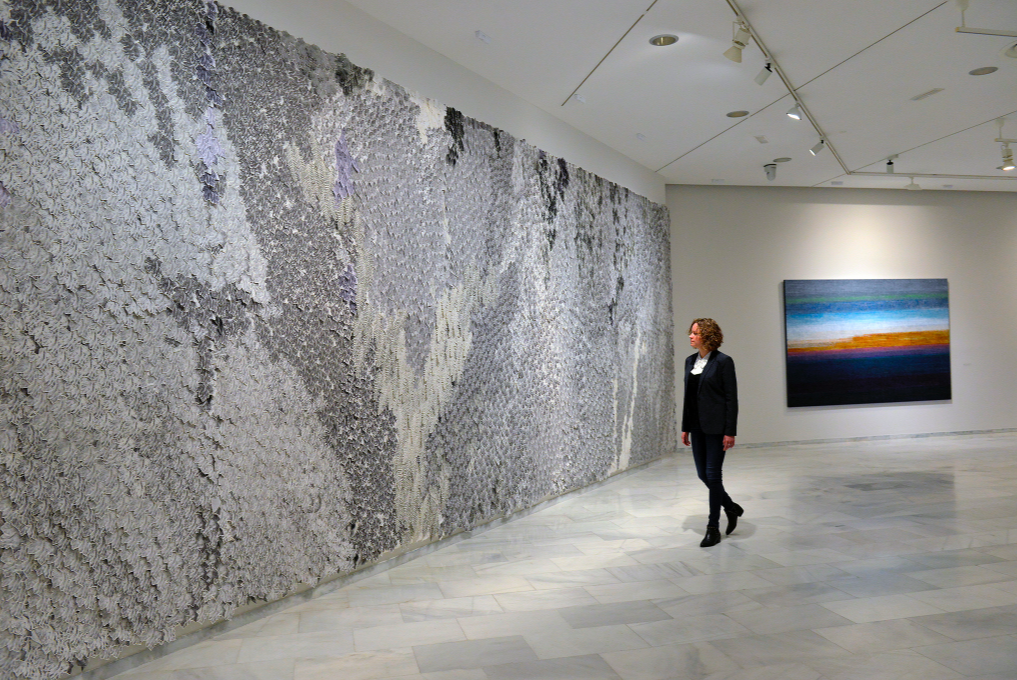 Soledad Sevilla, @ Fundación Bancaja
Soledad Sevilla, @ Fundación Bancaja SOLEDAD SEVILLA -The feeling of color
Centro Cultural Bancaja - Valencia ( February, 21 - June, 30, 2019 )
Bancaja Foundation presents the exhibition Soledad Sevilla. The feeling of color, the first retrospective of the artist in Valencia, her hometown. The show, takes a tour through its more than forty years of work through a selection of 49 works dated between 1975 and 2018 that come from both the own collection of the creator and other institutional and private collectors.
Curated by María de Corral and Lorena Martínez de Corral, the exhibition reflects the artistic evolution of Soledad Sevilla and her work of representing light and space throughout her career. The exhibition is structured in blocks of different stages and creative series: the beginning in the 70s with a geometric work as a reaction to the academicism of the school of Fine Arts and diagonal lines that escape the fabric and leave room for imagination and to thought; the introduction of color at the end of the 70s and the Las Meninas series, which begins after a Harvard course on the painter and in which he does a study not only about painting, but especially about the representation of space; the series La Alhambra and Los Toros, in which light, water and forms manifest a full moment of use of frames, grids and modules as a way to transform the motives that inspire them and the sensations and feelings into lights and forms; the Insomnios series, in which nature and matter work both outside and inside and show chromatic tensions and darkness; the series Los Apóstoles, in which figuration gives way to abstraction and the artist relates wood and fabrics to talk about her love and knowledge of the history of art; and, finally, the series Nuevas lejanías y Luces de invierno, which reflect fantasies and dreams through a metamorphosis in light and color.
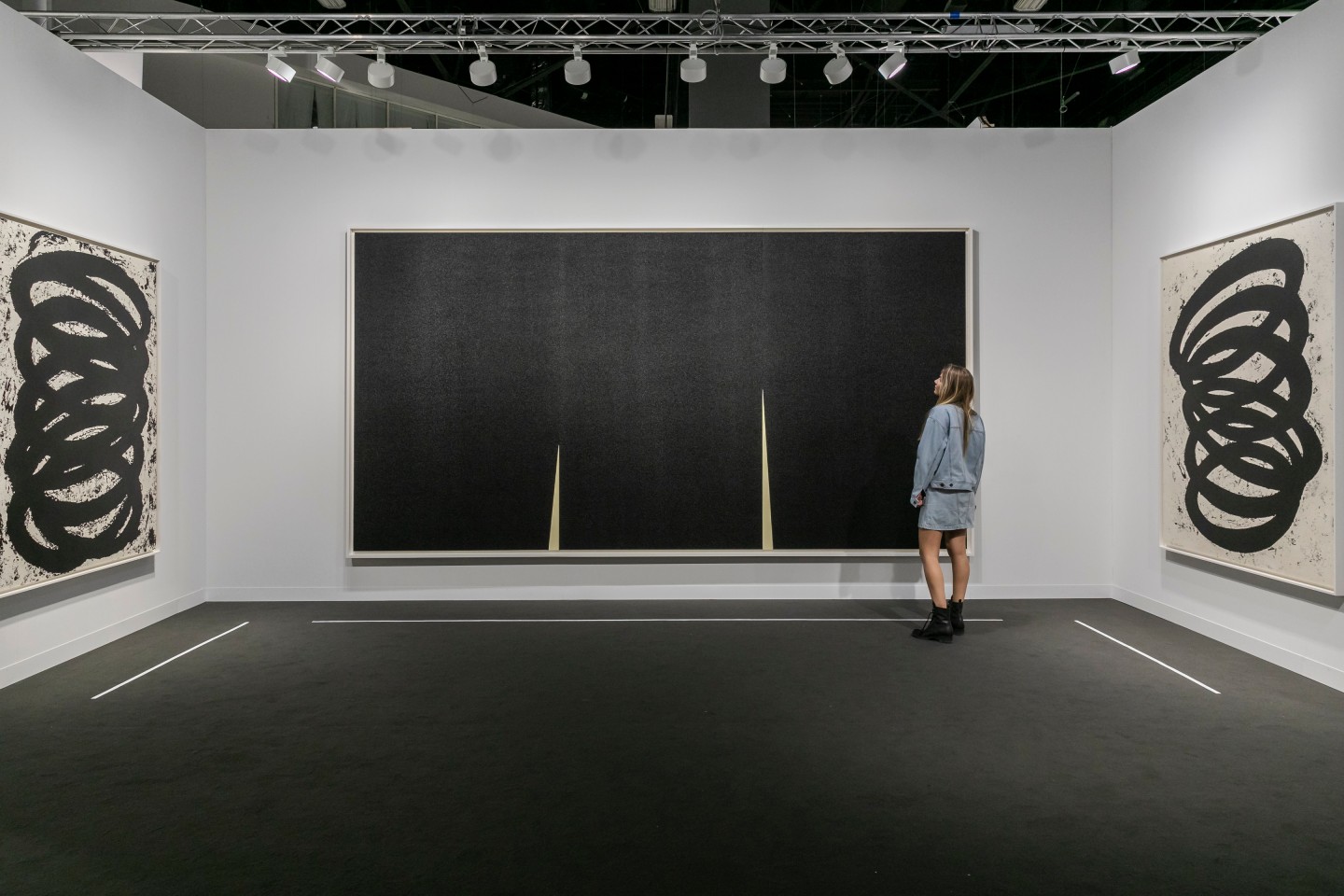 © Art Basel (Courtesy Art Basel)
© Art Basel (Courtesy Art Basel)ART BASEL MIAMI BEACH
Miami Beach Convention Center ( USA ) ( December 5 – 8, 2018 )
This year, over 200 of the world's leading international Modern and contemporary art galleries display artworks by over 4,000 artists, including paintings, sculptures, installations, photography, film, video, and digital art. Visitors can find works ranging from editioned pieces by young artists to museum-caliber masterpieces.
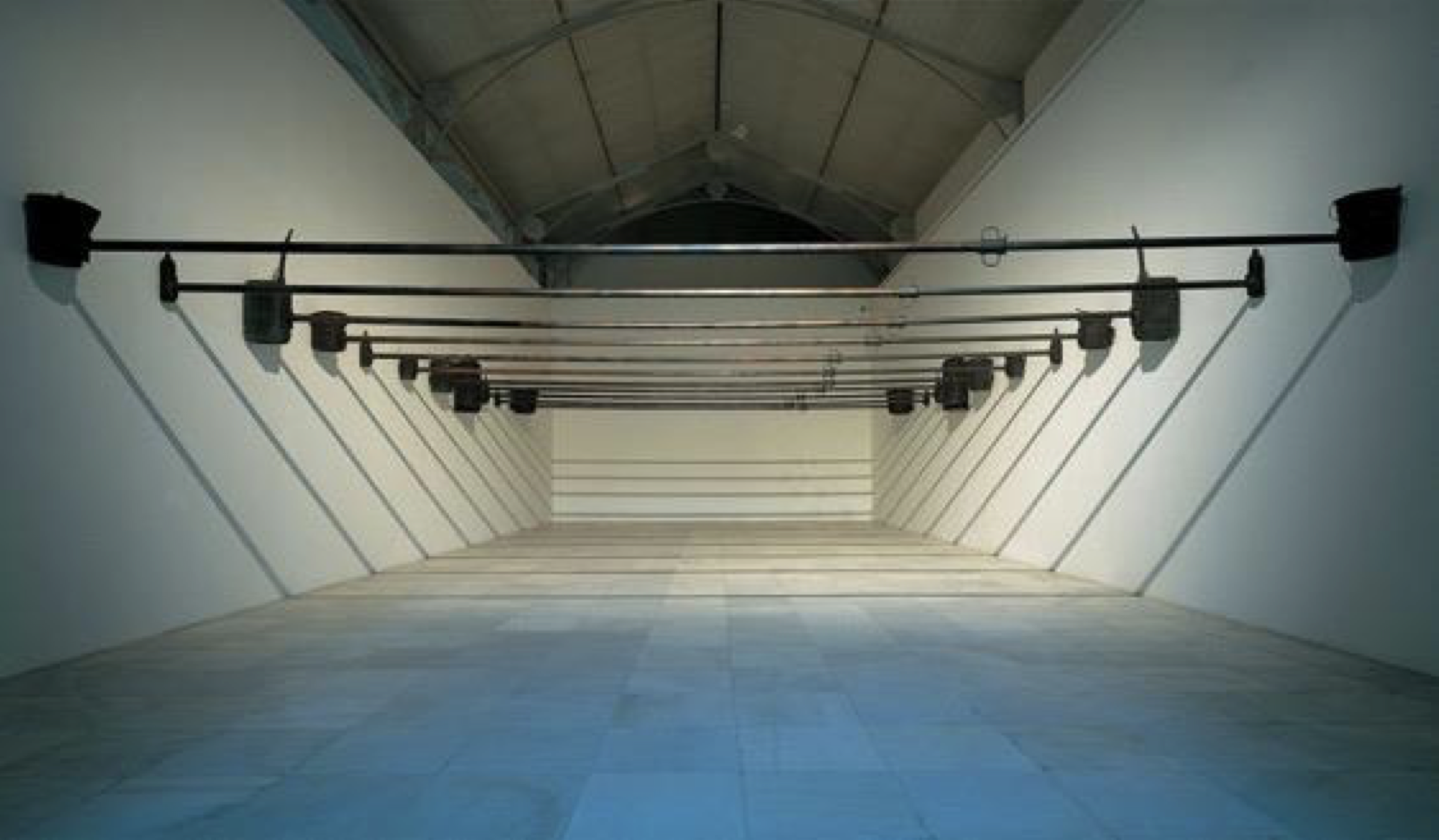 © Jaume Plensa -"Memoires Jumelles", 1992
© Jaume Plensa -"Memoires Jumelles", 1992JAUME PLENSA
MACBA ( Museu d’Art Contemporani de Barcelona ) ( December 1, 2018 - April 22, 2019 )
Jaume Plensa (Barcelona, 1955) is an artist of materials, sensations and ideas. His references include literature, especially poetry, music, religion and thought. He considers himself, above all, a sculptor, although his creative process has included multiple disciplines. His work addresses the very condition of being: its physical and spiritual essence, ontological awareness of present and past, moral codes and dogmas, and our relationship with nature. What we cannot explain is, precisely, what makes us human. Plensa’s objective is not to create objects, but to develop relationships that embrace everyone.
The MACBA exhibition features works from the 1980s to the present, in a journey showing the dialogue that takes place between works that represent the human figure and those that are abstract. This tension is the thread that runs through the whole of his work, a corpus that highlights the strength of binomials such as weightlessness/compactness, light/dark, silence/sound, spirit/matter and life/death.
This solo exhibition of Jaume Plensa at MACBA offers a broad overview of the work of one of the Catalan sculptors with the widest international profile. Awarded the National Visual Arts Prize of the Generalitat (1997), the Velazquez Prize for Visual Arts of the Ministry of Education and Culture (2013) and the City of Barcelona Prize (2015), among others, he is recognised worldwide for his public works in cities such as Chicago, London, Montreal, Nice, Tokyo, Toronto and Vancouver.
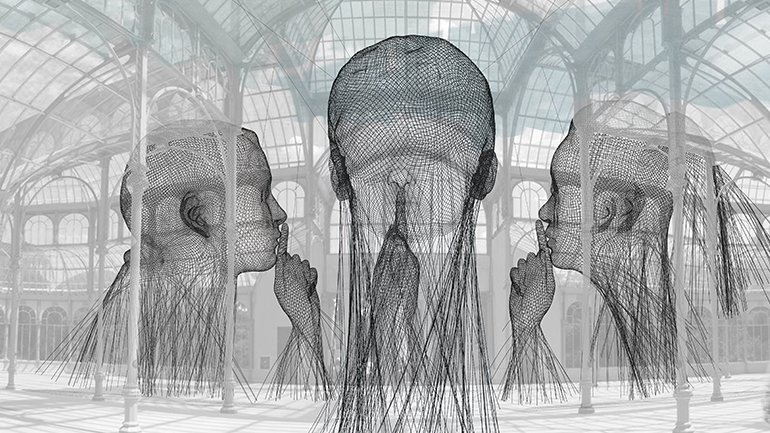 Jaume Plensa, Invisibles, 2018. © Jaume Plensa, VEGAP, Madrid, 2018
Jaume Plensa, Invisibles, 2018. © Jaume Plensa, VEGAP, Madrid, 2018JAUME PLENSA - Invisibles
Palacio de Cristal ( Madrid ) ( November 16, 2018 - March 3, 2019 )
From his beginnings as a sculptor, Jaume Plensa (Barcelona, 1955) resorts to spirituality, the body and collective memory as fundamental sources to lock his artistic expression. Literature, psychology, biology, language and history become strategic tools in the creation of his works. With a wide spectrum of materials (steel, cast iron, resin, glass, water or sound), Plensa provides weight and physical volume to the components of the human condition and the ephemeral.
The invisible is the essence of his intervention in the Palacio de Cristal: a sculptural group made up of steel meshes that draw in the space the unfinished faces of figures suspended in the air, crossed by light and stopped in time.
Versatile artist, Jaume Plensa has experimented with engraving, drawing, sound, video and even stage design. He is one of the Spanish creators of greater international projection. He has lived and worked in Germany, Great Britain, France and the United States.
After his first solo exhibition in 1980, at the Fundació Joan Miró in Barcelona, his work has been shown in museums around the world, including the Galerie nationale du Jeu de Paume in Paris, France; the Lehmbruck Museum in Duisburg, Germany; the Nasher Sculpture Center in Dallas, USA; the Espoo Museum of Modern Art in Helsinki, Finland; the Toledo Museum of Art, Toledo, USA; the Musée d'Art Moderne et Contemporain of Saint Étienne, France or the Madison Museum of Contemporary Art, USA.
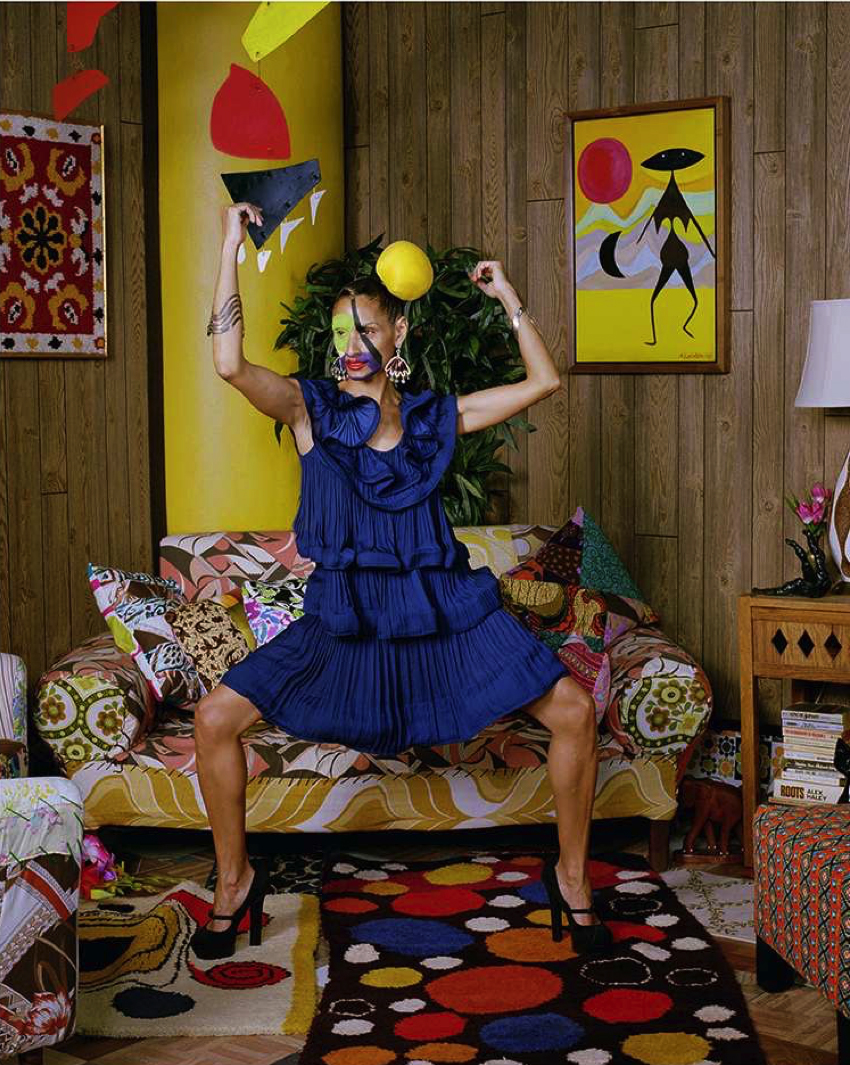 MICKALENE THOMAS Calder Series #2 -Color photograph 110,5 x 90 x 6 cm © Mickalene Thomas.Courtesy of the artist and Galerie Nathalie Obadia.
MICKALENE THOMAS Calder Series #2 -Color photograph 110,5 x 90 x 6 cm © Mickalene Thomas.Courtesy of the artist and Galerie Nathalie Obadia. PARIS PHOTO 2018
GRAND PALAIS PARIS ( November 8 – 11, 2018 )
This year, the photographic offer at the Fair is both rich and diverse with 167 galleries and 31 international publishers in the nave, 14 series, large format and installation projects showcased in PRISMES on the upper floor, the Film sector at mk2 Grand Palais, and Curiosa, a new curated sector that will present an in-depth look at a specific topic or theme in photography. This year, Curiosa will question relations to the body and eroticism.
In addition to the galleries and publishers, we invite you to discover this year an eclectic artistic program, featuring the mischievous and poetic private collection of Californian Nion McEvoy, the JPMorgan Chase Art Collection, encompassing 150 years of photographic history, the exhibition of Baptiste Rabichon, laureate of the BMW Residency, as well as the exhibitions of our partners. Don’t miss the Paris Photo - Aperture Foundation PhotoBook Awards, the Platform conversations and Artist Talks bringing together renowned figures in the field, numerous artist signature sessions, the laureates of the 2018 Carte Blanche Students, and Elles X Paris Photo, an initiative of the French Ministry of Culture and Paris Photo honoring women artists through a parcours highlighting selected artworks at the fair and in institutions throughout Paris.
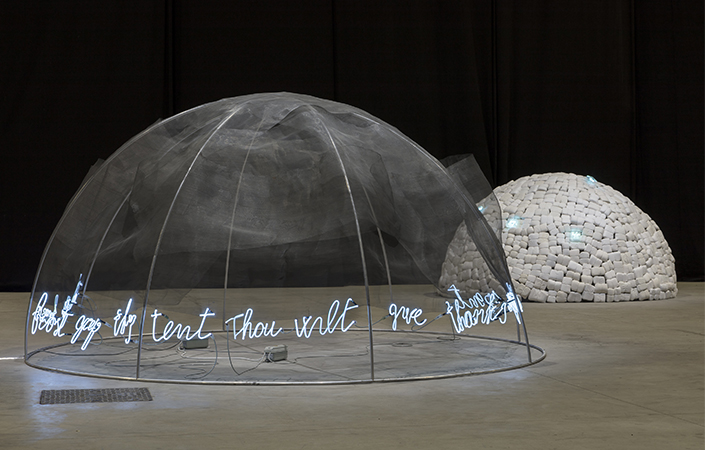 Mario Merz, Igloos, exhibition view at Pirelli HangarBicocca, Milan , 2018. Courtesy Pirelli HangarBicocca, Milan, Photo: Renato Ghiazza © Mario Merz, by SIAE 2018
Mario Merz, Igloos, exhibition view at Pirelli HangarBicocca, Milan , 2018. Courtesy Pirelli HangarBicocca, Milan, Photo: Renato Ghiazza © Mario Merz, by SIAE 2018MARIO MERZ - Igloos
Pirelli HangarBicocca - Milan ( October 25, 2018 - February 24, 2019 )
“Igloos”, an exhibition dedicated to Mario Merz (Milan, 1925–2003)—one of the most relevant post-war artists—brings together his most iconic group of works, the igloos, dating from 1968 until the end of his life. Curated by Vicente Todolí, and realized in collaboration with Fondazione Merz, the exhibition spans the whole space of the Navate of Pirelli HangarBicocca, placing the visitor at the heart of a constellation of over 30 large-scale works in the shape of an igloo: an unprecedented landscape of great visual impact.
A key figure of Arte Povera, Mario Merz investigates and represents the processes of transformation of nature and human life: in particular the igloos, visually traceable to primordial habitations, become for the artist the archetype of inhabited places and of the world, as well as a metaphor for the various relationships between interior and exterior, between physical and conceptual space, between individuality and collectivity. These pieces are characterized by a metal structure coated in a great variety of common materials, such as clay, glass, stone, jute, and steel—often leaning or intertwined in an unstable fashion—and by the use of neon elements and wording.
The exhibition provides an overview of Mario Merz’s work, of its historical importance and great innovative reach: gathered from private collections and international museums, the igloos will be displayed together in such a large number for the first time.
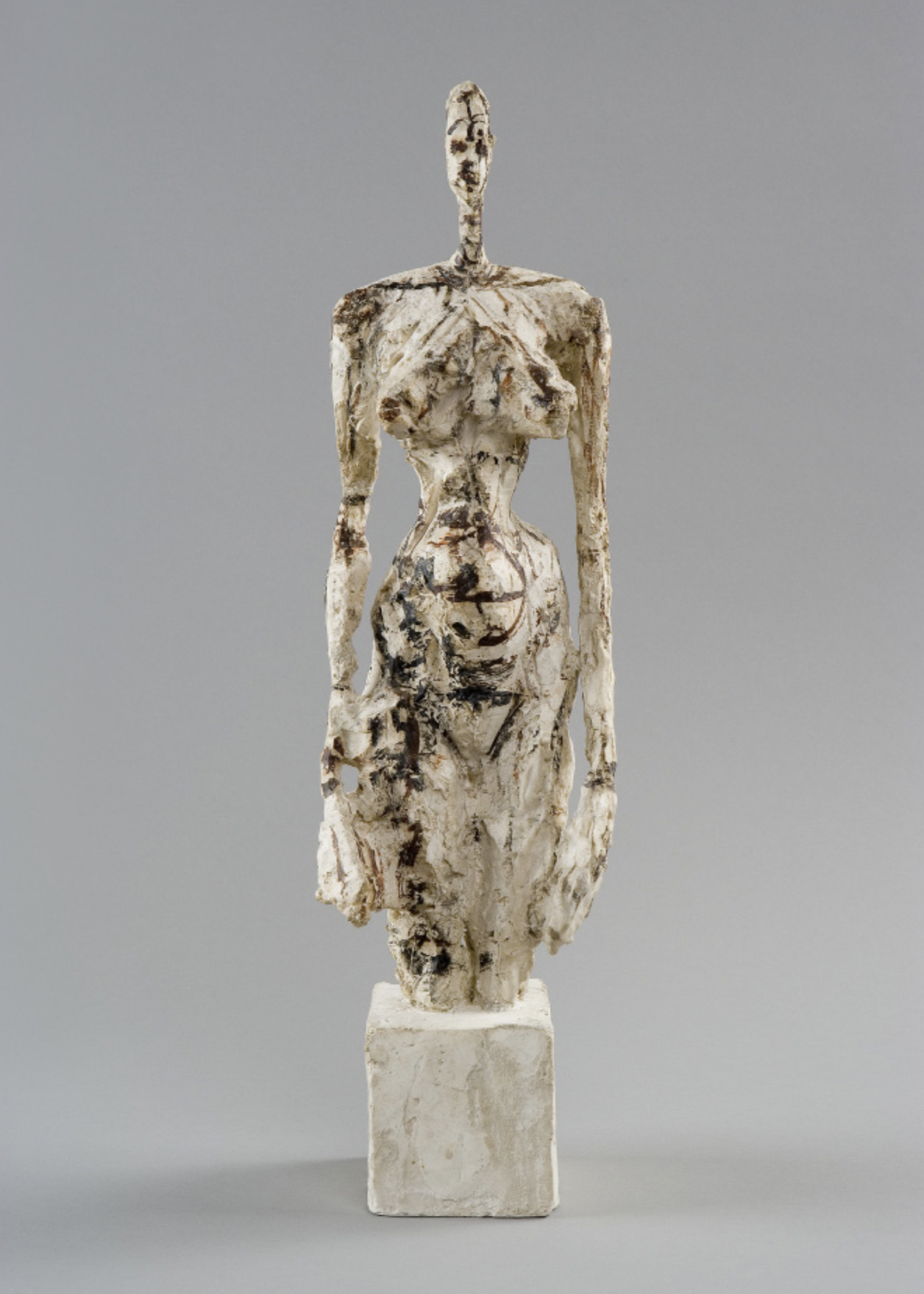 Alberto Giacometti Desnudo de pie sobre un pedestal cúbico (Nu debout sur socle cubique), 1953 Yeso pintado 43,5 x 11,7 x 11,8 cm Fondation Giacometti, París © Succession Alberto Giacometti ,VEGAP, Bilbao, 2018
Alberto Giacometti Desnudo de pie sobre un pedestal cúbico (Nu debout sur socle cubique), 1953 Yeso pintado 43,5 x 11,7 x 11,8 cm Fondation Giacometti, París © Succession Alberto Giacometti ,VEGAP, Bilbao, 2018 ALBERTO GIACOMETTI - A Retrospective
Museo Guggenheim Bilbao ( October 19, 2018 – February 24, 2019 )
“Seeing, understanding the world, feeling it intensely and expanding our capacity for exploration to the maximum.” These were the words that Alberto Giacometti himself used to describe his drive to create throughout his career. This retrospective is devoted to one of the most influential sculptors and painters of the 20th century and will present numerous loans from the Giacometti Foundation, Paris, which possesses exceptional and diverse holdings from all stages of the Swiss artist’s life: from his Cubist and Surrealist period up until the works created in the 1940s and at the end of his life. Jean Paul Sartre called him “the perfect existentialist artist, always half way between nothingness and being." Only at the Tate Modern and in Bilbao will it be possible to see the exceptional group of Femmes de Venise, which was last show entirely at the Venice Biennial in 1956
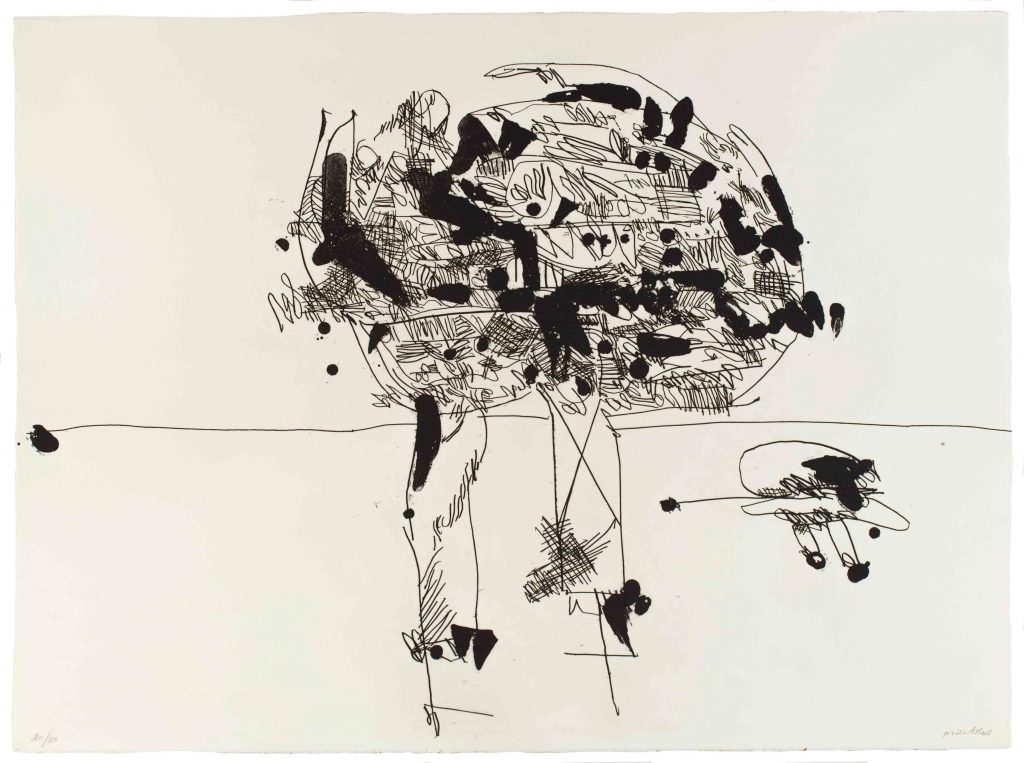 Antropofauna @Manolo Millares
Antropofauna @Manolo MillaresMANOLO MILLARES - Descubrimientos Millares, 1959-1972
Real Academia de Bellas Artes de San Fernando ( October,11, 2018 – January 5, 2019 )
The Real Academia de Bellas Artes de San Fernando presents in Madrid Descubrimientos Millares, 1959-1972, an exhibition that includes for the first time the complete graphic work of Manolo Millares (Las Palmas de Gran Canaria, 1926 - Madrid, 1972), as well as the presentation of its catalog raisonné, work of Alfonso de la Torre, also curator of the exhibition.
The fact that the National Calcography is the first headquarters of what will be a subsequent itinerancy in the other institutions that have co-produced this project -Fundación Juan March, Fundación Museo del Grabado Español Contemporáneo and Regional Government of Castilla-La Mancha- reinforces with his prolongation in the Goya Cabinet the strong identity of the work of Millares, rooting it in the same feeling of rebellion that inspired the work of the Aragonese.
For Juan Bordes, academic delegate of the National Calcography, "the graphic work, with its vocation of diffusion, raises the cry of freedom of these two masters to transcend the redoubts of his painting. Thus, with this first site of the exhibition, the parallel between Millares and Goya becomes more evident because their revolutionary works assume the same risks, since they are born in a society with similar repressions ".
It does not seem strange the interest that Millares maintained throughout his trajectory for the engraving and the graphic techniques in general, if his childhood fascination for the Caprichos (1797-1799) and the Disasters of War (1810-1815) is remembered. , contemplated by reproductions found in 1933 in books of his family home, would exert a powerful attraction in the child and future artist.
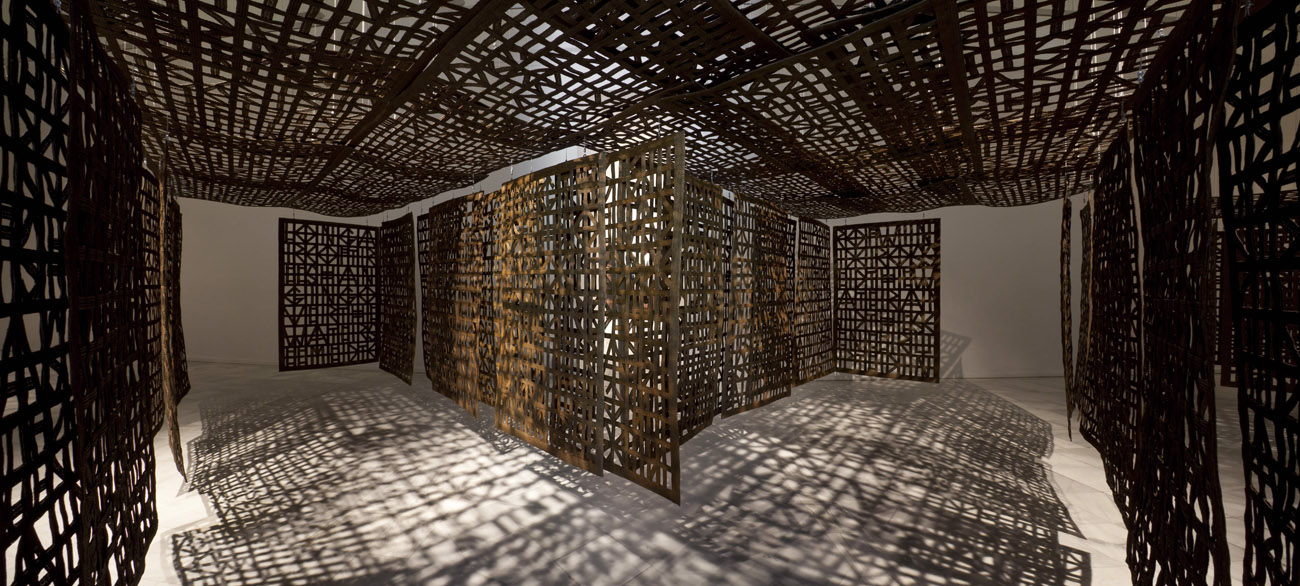 @ Cristina Iglesias
@ Cristina IglesiasCRISTINA IGLESIAS : ENTRƎSPACIOS
Centro Botín ( Santander ) (October 6, 2018 – March 3, 2019)
Curated by Vicente Todolí, president of the Advisory Board of Plastic Arts of the Botín Foundation, CRISTINA IGLESIAS: ENTRƎSPACIOS will host a selection of twenty-three works created by the artist between 1992 and 2018, some of them of monumental format, a habitual practice in her job.
Awarded with the Spanish National Prize of Plastic Arts in 1999, Cristina's work is influenced by her stay in London in the 80s, where she found processes of sculpture materialization much more open. In addition, it was in the United Kingdom where he began to connect not only with the "new British sculpture", but also with the Düsseldorf school. In this period of discovery, he becomes familiar with the work of Eva Hesse and Robert Smithson, among other artists whom he considers important in that formative period, although his work is totally isolated from any current or trend.
Throughout his career, Iglesias has defined a unique sculptural vocabulary, creating immersive and experiential environments that reference and unite the architecture, literature and specific cultural influences of the place. Through a language of natural forms and built in various materials, poetically redefines the space by confusing interior and exterior, organic and artificial, combining industrial materials with natural elements to produce new sensorial spaces unexpected for the viewer.
Considered one of the most internationally recognized Spanish artists, in the exhibition CRISTINA IGLESIAS: ENTRƎSPACIOS a large selection of pieces will be presented, which will occupy the second floor of the west volume of the Botín Center in full and which will coexist in total harmony with her work in the Gardens from Pereda “Desde lo subterráneo”.
The last major exhibition of Cristina Iglesias in Spain took place at the Reina Sofía National Art Center Museum in 2013, so this show is a unique opportunity to enjoy her career and her most recent work.
 Installation view of Tatiana Trouvé, The Shaman, 2018, at kamel mennour’s booth at Frieze London, 2018. © ADAGP Tatiana Trouvé. Courtesy the artist and kamel mennour, Paris/London.
Installation view of Tatiana Trouvé, The Shaman, 2018, at kamel mennour’s booth at Frieze London, 2018. © ADAGP Tatiana Trouvé. Courtesy the artist and kamel mennour, Paris/London.FRIEZE LONDON
Regent’s Park ( 4 – 7 October 2018 )
Frieze London 2018 will showcase the best of international contemporary art, with a discerning selection of around 160 galleries presenting their most forward-thinking artists and imaginative presentations. Opening for the first time with a two-day Preview, Frieze London coincides with Frieze Sculpture and Frieze Masters in The Regent’s Park, together forming the most significant week in London’s cultural calendar. Global lead partner Deutsche Bank supports Frieze London for the 15th consecutive year, continuing a shared commitment to discovery and artistic excellence.
New collaborations with international curators, institutions and galleries will respond to contemporary issues – from the lack of visibility of women in the marketplace to hidden systems of communication and control – and create an exceptional environment for creativity and discovery.
 Joan Miró, Self Portrait (detail), 1919, on canvas, 73 x 60 cm, France, Paris, Musée national Picasso-Paris, Gift Picasso Heritage 1973/1978 © Successió Miró / Adagp, Paris 2018 / Photo Rmn-Grand Palais (musée national Picasso-Paris) / Mathieu Rabeau expo
Joan Miró, Self Portrait (detail), 1919, on canvas, 73 x 60 cm, France, Paris, Musée national Picasso-Paris, Gift Picasso Heritage 1973/1978 © Successió Miró / Adagp, Paris 2018 / Photo Rmn-Grand Palais (musée national Picasso-Paris) / Mathieu Rabeau expoMIRÓ
Grand Palais ,Galeries Nationales . Paris ( October 3, 2018 – February 4, 2019 )
This retrospective on the great Catalan master Joan Miró (1893-1983) brings together nearly 150 key pieces to give this unique and important body of work its rightful place in modernity. This exhibition takes place forty-four years after the one organised by Jean Leymarie and Jacques Dupin at the same venue in 1974. Exceptional loans from some of the most important museums in Europe, America and across the globe, as well as major private collections, place the emphasis on the pivotal periods for Miró, who once declared: “People will understand more and more that I opened the doors to another future, that runs against all falsehood, all fanaticism.” The work of this exceptional artist shaped art throughout the 20th century, radiating its power and poetry for almost seven decades with unrivalled generosity and originality.
The exhibition has been designed specifically for the Grand Palais spaces and evokes Miró’s Mediterranean world, with major works (paintings and drawings, sculptures and ceramic, illustrated books) displayed together to illuminate an artistic career defined by continuous renewal. The exhibition begins on the first floor, with the fauvist, cubist and detailist periods, followed by a surrealist period where Miró invented a poetic world that was previously unseen in the world of 20th century painting. These fruitful periods demonstrate the artist’s investigations and research, as well as his colour palette, which fuelled a vocabulary of new and unusual forms. Neither abstract nor figurative and boasting a wealth of inventions, the poetic exhibition circuit reveals the resolutely new language that Miró continued to develop. He found the sources for his art in the vitality of daily life, blossoming into a previously unknown world where the dreams of the creator have pride of place. “I need a point of departure,” explained Miró, “be it a speck of dust or a shaft of light. This shape offers me a range of ideas, with one thing leading to another. In this way, a single thread can open up a whole new world to me.”
The rise of fascism in the 1930s saw him engaged in an endless quest for freedom. The so-called “wild” paintings illustrate the strange and unprecedented power that he gave his work during these extremely tense times. In the 1940s, the appearance of the Constellations, an exceptional series of small-format works produced at Varengeville-sur-Mer, in Normandy, opened up a dialogue with unfulfilled dreams. His investigations into ceramics soon gave rise to a form of sculpture that also demonstrated his passion for reality and a sense of reverie that seemed unimaginable in this discipline.
Miró transformed the world around him with an apparent simplicity of means, whether a symbol, the tracing of a finger or water on paper, a seemingly fragile line on the canvas, a line in the ground fused with fire, or an insignificant object paired with another. He conjured a world full of poetic transformations from these surprising juxtapositions and unusual marriages, restoring enchantment to the world. “For me, a painting should be like sparks. It should dazzle you like the beauty of a woman or a poem.”
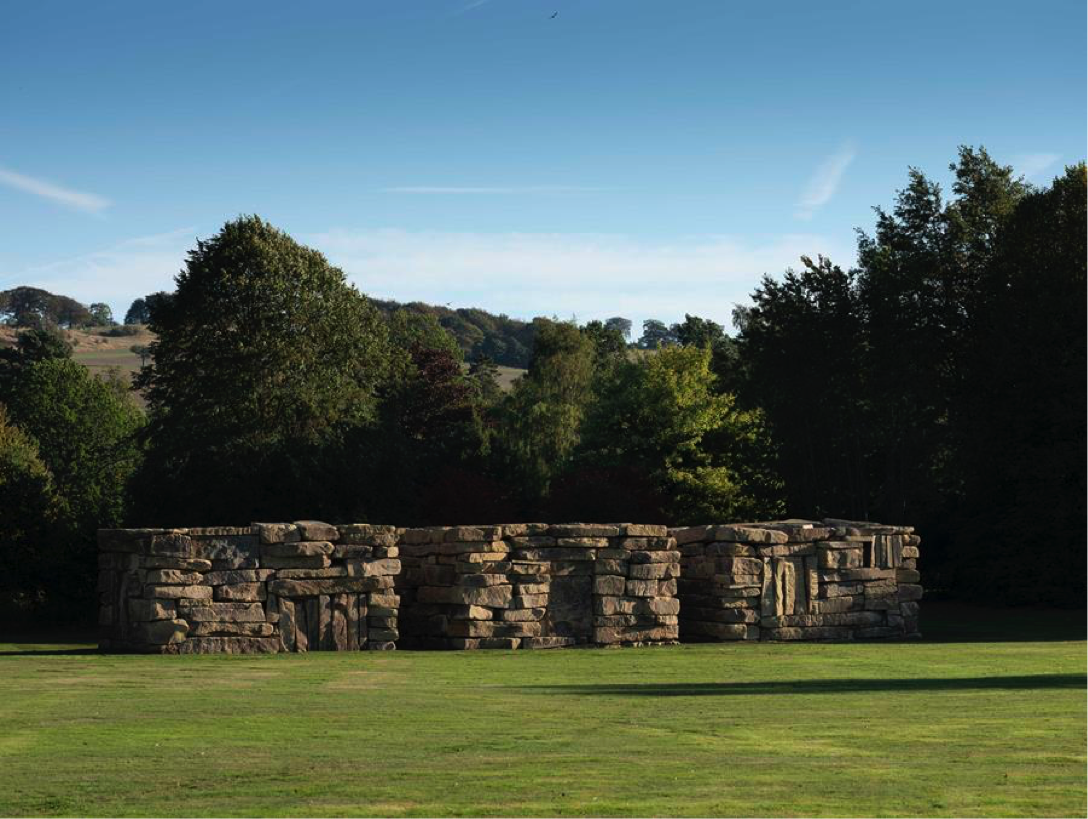 Sean Scully, Wall Dale Cubed, 2018. @ Sean Scully. Courtesy the artist and YSP. Photo @ Jonty Wilde
Sean Scully, Wall Dale Cubed, 2018. @ Sean Scully. Courtesy the artist and YSP. Photo @ Jonty WildeSEAN SCULLY - Inside Outside
Yorkshire Sculpture Park - ( Wakefield - U.K.) ( September 29, 2018 – January 6, 2019)
Exploring concepts of landscape and abstraction with human experience, the exhibition unites sculpture with important recent paintings on aluminium, together with works on paper. Drawing out ideas pertinent to the singularity of YSP and its landscape, this is a poetic, robust experience that embraces the Park’s topography and Scully’s exceptional vigour, as well as his belief that in life and art there is perpetual discovery.
The exhibition presents an artist at the height of his powers. Aged 72, it is evident that there is no curtailment of Scully’s energy, drive and vision. Keenly aware of the labour that dominated the lives of his mining family, Scully’s practice is one of great rigour and toil, his output prodigious. For YSP he has made new paintings and sculpture – resolutely contemporary works that will integrate an inclination towards geometry with the romantic sincerity of landscape painting in the historical tradition.
Scully has been working in steel and stone to make powerful structures that both assert and subvert their materiality. The monumental Wall Dale Cubed (2018) in Lower Park is the latest sculpture that relates to a series of paintings that Scully began in the 1990s. This new sculpture made for YSP uses 1,000 tonnes of Yorkshire stone from a local quarry and was constructed over many weeks. Referencing ancient dry stone walls, such as those commonly found in Yorkshire, Mexico, Egypt and especially those of the Irish Aran Islands, which Scully has intensively photographed, this colossal work is built in the same way throughout, so that ‘when looking at the outside of the block, one can feel the inside without being able to see it’. In contrast, the Corten steel Crate of Air (2018) in the Country Park investigates fragmented space or ‘boxes of air’ that form their own frames to the landscape beyond. The angular shapes Scully uses in this sculpture resonate with his paintings and is made up of individual sections that form relationships once pieced together. Sited in YSP’s historic landscape, these vast metallic and stone sculptures demand a physical trek across the landscape that is extended further uphill through the former hunting ground of the Bretton Estate to Longside Gallery.
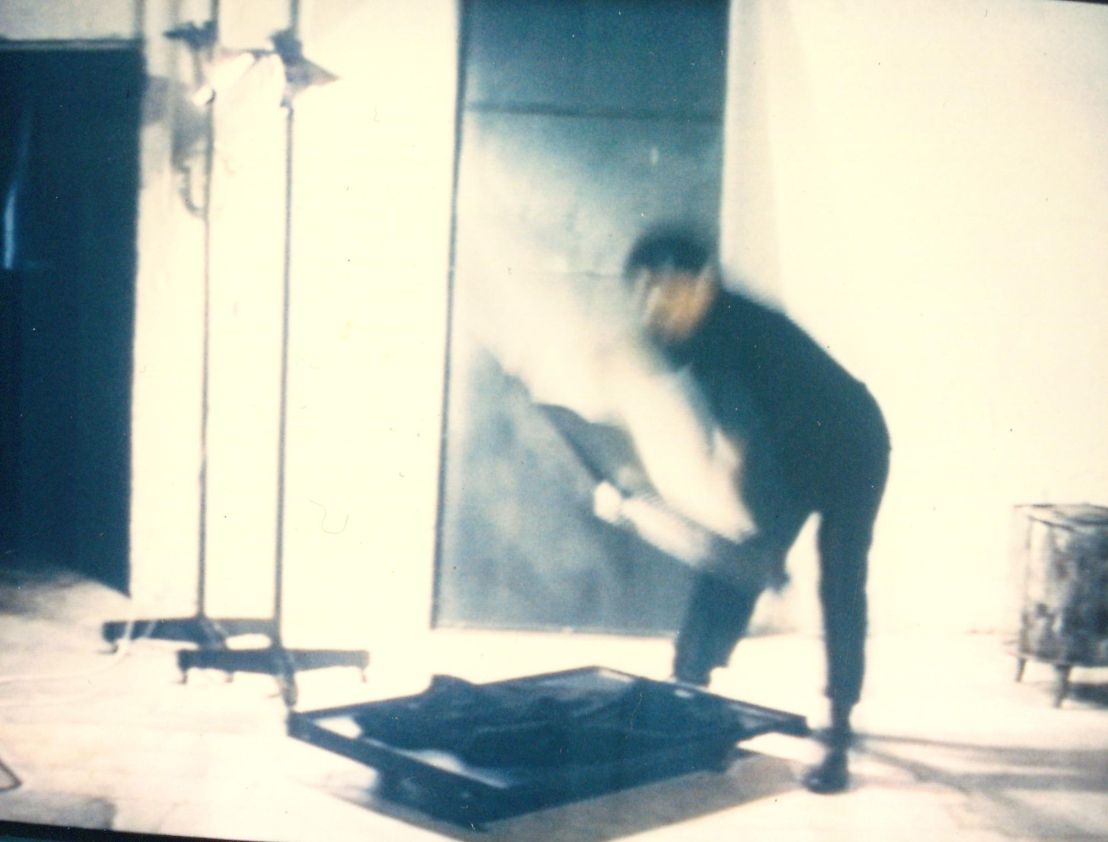 © Ángeles Marco / Performance presente instante
© Ángeles Marco / Performance presente instanteANGELES MARCO - Vertigen
IVAM, Institut Valencià d'Art Modern ( September 27, 2018 - January 6, 2019 )
Ángeles Marco (Valencia, 1947–2008) is one of the most important artists in the generation of artists that spearheaded the renovation of sculpture in Spain in the 1980s and 1990s. This artist – who was associated with the theoretical assumptions of international Conceptual Art and Post-Minimalism – and her legacy have not been sufficiently studied since her death a decade ago.
As part of its policy of giving visibility to female voices that have remained on the fringe of the official historiographic discourse, the IVAM is presenting a major selective exhibition devoted to this fundamental artist, twenty years after El taller de la memoria (The Workshop of Memory), the show that this institution devoted to her in the Centre del Carme, in which a group of six monumental installations was presented.
This new exhibition devoted to Ángeles Marco presents a carefully chosen selection of sculptures and drawings and a considerable amount of archive material representative of her entire career and not previously seen, concentrating on the series of works produced in her early years – Espacios ambiguos (Ambiguous Spaces), Entre lo real y lo ilusorio (Between the Real and the Illusory), El Tránsito (The Transition) and Salto al vacío (Leap into the Void), and on the works made from 2000 to the artist’s death.
